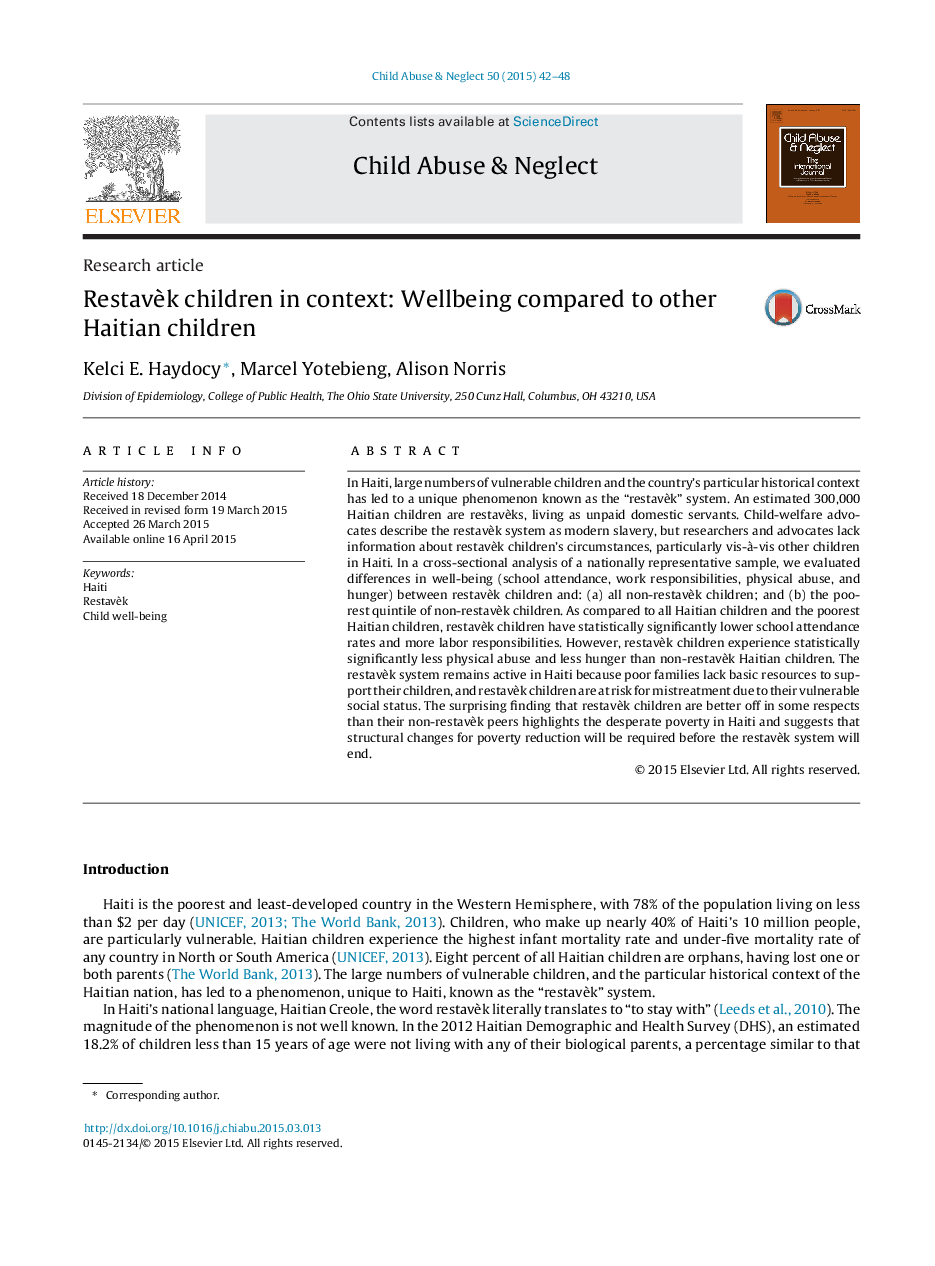| کد مقاله | کد نشریه | سال انتشار | مقاله انگلیسی | نسخه تمام متن |
|---|---|---|---|---|
| 6832495 | 617430 | 2015 | 7 صفحه PDF | دانلود رایگان |
عنوان انگلیسی مقاله ISI
Restavèk children in context: Wellbeing compared to other Haitian children
دانلود مقاله + سفارش ترجمه
دانلود مقاله ISI انگلیسی
رایگان برای ایرانیان
کلمات کلیدی
موضوعات مرتبط
علوم پزشکی و سلامت
پزشکی و دندانپزشکی
پریناتولوژی (پزشکی مادر و جنین)، طب اطفال و بهداشت کودک
پیش نمایش صفحه اول مقاله

چکیده انگلیسی
In Haiti, large numbers of vulnerable children and the country's particular historical context has led to a unique phenomenon known as the “restavèk” system. An estimated 300,000 Haitian children are restavèks, living as unpaid domestic servants. Child-welfare advocates describe the restavèk system as modern slavery, but researchers and advocates lack information about restavèk children's circumstances, particularly vis-à -vis other children in Haiti. In a cross-sectional analysis of a nationally representative sample, we evaluated differences in well-being (school attendance, work responsibilities, physical abuse, and hunger) between restavèk children and: (a) all non-restavèk children; and (b) the poorest quintile of non-restavèk children. As compared to all Haitian children and the poorest Haitian children, restavèk children have statistically significantly lower school attendance rates and more labor responsibilities. However, restavèk children experience statistically significantly less physical abuse and less hunger than non-restavèk Haitian children. The restavèk system remains active in Haiti because poor families lack basic resources to support their children, and restavèk children are at risk for mistreatment due to their vulnerable social status. The surprising finding that restavèk children are better off in some respects than their non-restavèk peers highlights the desperate poverty in Haiti and suggests that structural changes for poverty reduction will be required before the restavèk system will end.
ناشر
Database: Elsevier - ScienceDirect (ساینس دایرکت)
Journal: Child Abuse & Neglect - Volume 50, December 2015, Pages 42-48
Journal: Child Abuse & Neglect - Volume 50, December 2015, Pages 42-48
نویسندگان
Kelci E. Haydocy, Marcel Yotebieng, Alison Norris,